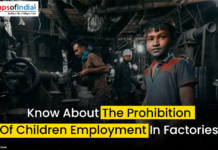Plastics come from materials discovered in nature, such as oil, natural gas, coal, minerals and plants. It was nature that formed the plastic initially. It was in the 1800s when scarce materials were replaced, such as ivory and tortoiseshell. Plastic can either be ‘synthetic’ or ‘biobased’. Synthetic plastics come from crude oil, natural gas or coal. Biobased plastics come from renewable products, namely starch, carbohydrates, vegetable fats and oils, bacteria, and other biological substances.
The first synthetic plastics came from cellulose, a substance found in plants and trees. Cellulose, along with a few chemicals, was heated, and the outcome was a new material that was intensely durable.
The vast majority of plastic in use today is synthetic because of the felicitation of manufacturing methods included in crude oil processing. Although, the flourishing demand for limited oil reserves is maintaining a requirement for newer plastics from renewable resources such as waste biomass or animal waste products from the industry.
The raw materials for today’s plastics come from different places, but one can make plastics from the hydrocarbons prepared in natural gas, oil, and coal.
In Europe, only a tiny proportion (nearly 4 – 6%) of our oil and gas reserves goes towards the production of plastics, with the rest used for various purposes such as electricity, transport, heating and, other applications.
Following are the steps which derive the plastic in use presently:
- Extraction of raw materials: Largely crude oil and natural gas, including coal, are a complex mixture of thousands of compounds, which are required to be processed.
- The refining process transforms crude oil into different petroleum products: They get changed to yield valuable chemicals comprising “monomers” (a molecule that is the basic creating blocks of polymers). The crude oil is heated in a furnace in the refining process, dispatched to the distillation unit, where heavy crude oil distinguishes into lighter components known as fractions. One of these, called naphtha, is the vital compound to make a large amount of plastic. However, there are other approaches, such as using gas.
- Polymerisation: It is a process in the petroleum industry where light olefin gases (gasoline), namely propylene, ethylene, butylene (i.e., monomers), are changed into heavy molecular weight hydrocarbons (polymers). It occurs when chemically the monomers bond and form chains. There are two different mechanisms for polymerisation: Addition polymerisation, where the added polymerisation reaction is when one monomer associates to the next one (dimer) and dimer to the next one (trimer) and goes on. It happens by setting up a catalyst, a peroxide. The whole approach is known as chain-growth polymers as it includes one monomer unit at a time. Examples of additional polymers are polystyrene, polyethylene and polyvinyl chloride. On the other side, Condensation polymerisation consists of connecting two or more different monomers by the obliteration of small molecules such as water. It also needs a catalyst for the reaction to take place between adjacent monomers. This is known as step-growth because one could add an existing chain to a different chain—examples of condensation: polyester and nylon.
- Compounding/Processing: In this process, different blends of materials are melt blended (mixed by melting) to make formulations for plastics. Usually, an extruder of some kind is undertaken for this purpose which further includes pelletising the mixture. Extrusion or a different moulding process then improves these pellets into an accomplished or semi-finished product. Frequently compounding takes place on a twin-screw extruder where the pellets are then processed into plastic objects of various designs, different sizes, shape, colour with proper properties according to the predetermined conditions made in the processing machine.




